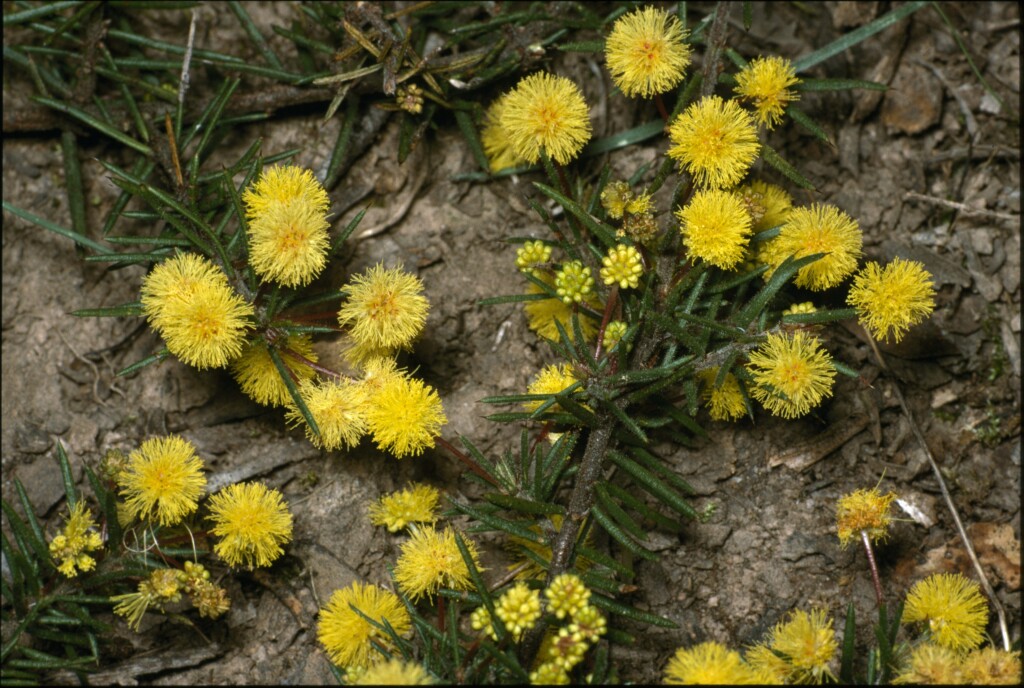Acacia aculeatissima
J.F.Macbr. Thin-leaf WattleDiffuse shrub, prostrate to 0.5 m high, rarely more; branchlets slender, finely ribbed, variously covered with short stiff hairs, rarely glabrous. Phyllodes inclined, spreading and/or reflexed, terete to subterete (more or less quadrangular when dry), 5–12(–20)mm long, 0.5–1 mm wide, slender, rigid, pungent, cusp slender and c. 1 mm long, pulvinus asymmetric, glabrous or less commonly hairy; veins 4, often minutely and irregularly papillose; stipules c. 1 mm long. Peduncles 1–3 per axil, 5–13 mm long, slender, glabrous, basal bract c. 1 mm long; heads globular, sometimes obloid, c. 20-flowered, lemon-yellow. Flowers 4-merous; sepals free to near base. Pods linear, biconvex, to 6 cm long, 3–4 mm wide, firmly chartaceous, straight to shallowly curved, glabrous; seeds longitudinal, oblong, 3.5–4 mm long, aril terminal. Flowers Aug.–Oct.
Wim, GleP, VVP, VRiv, GipP, OtP, WaP, Gold, CVU, GGr, DunT, NIS, EGL, EGU, HSF, HNF, OtR, MonT, HFE. Also NSW. Widespread and sometimes locally abundant, often growing in rocky areas in Eucalyptus woodland or forest or closed heath.
Plants with hairy phyllodes are common in the Grampians but occur less frequently elsewhere (e.g. Muckleford, Swanpool). Phyllodes vary in size and orientation between populations, sometimes few being reflexed.
Differs from A. ulicifolia and A. brownii in having phyllodes often reflexed, and flowers 4-merous. See also notes under A. genistifolia.
Entwisle, T.J.; Maslin, B.R.; Cowan, R.S.; Court, A.B. (1996). Mimosaceae. In: Walsh, N.G.; Entwisle, T.J., Flora of Victoria Vol. 3, Dicotyledons Winteraceae to Myrtaceae, pp. 585–658. Inkata Press, Melbourne.
 Spinning
Spinning

